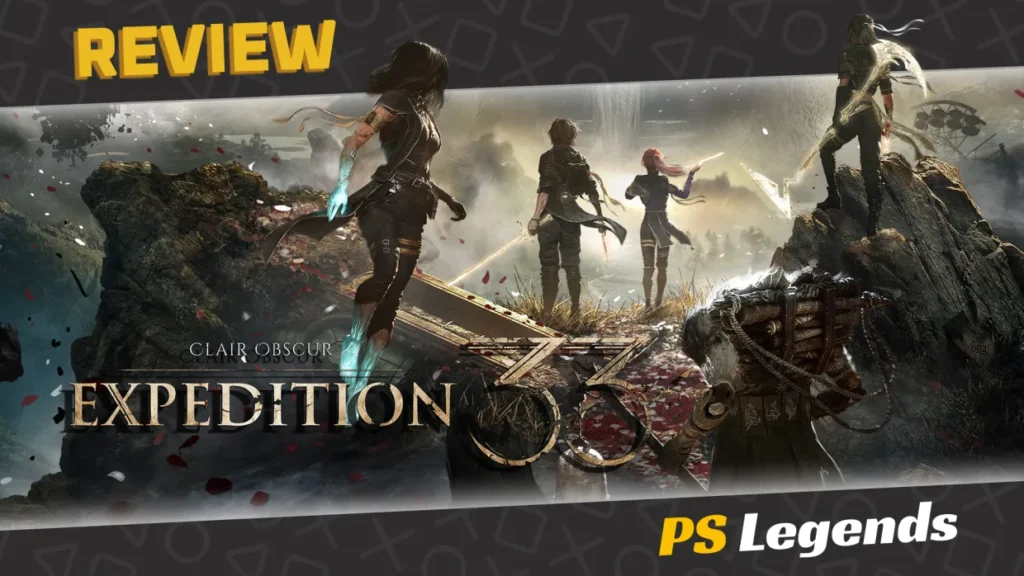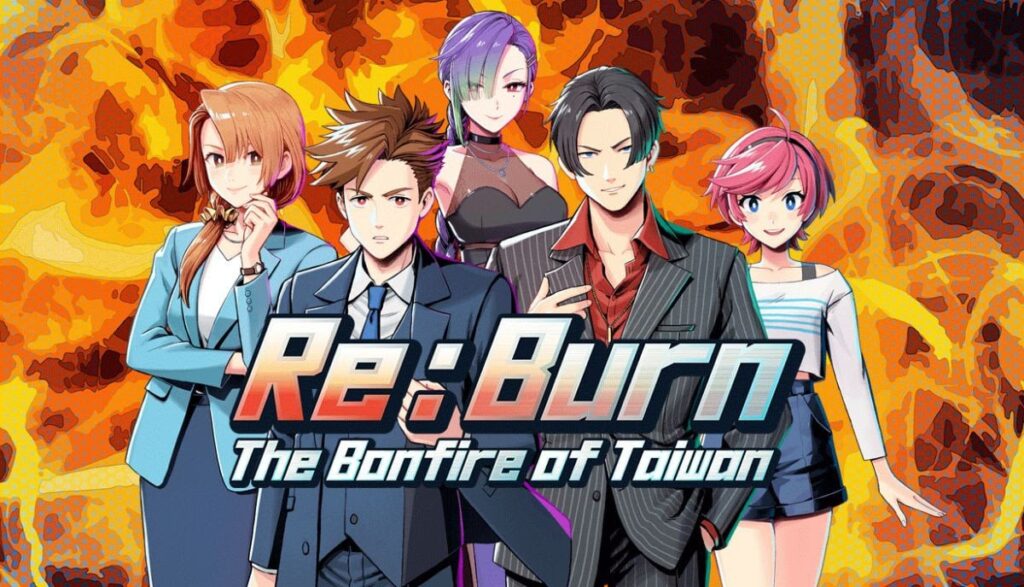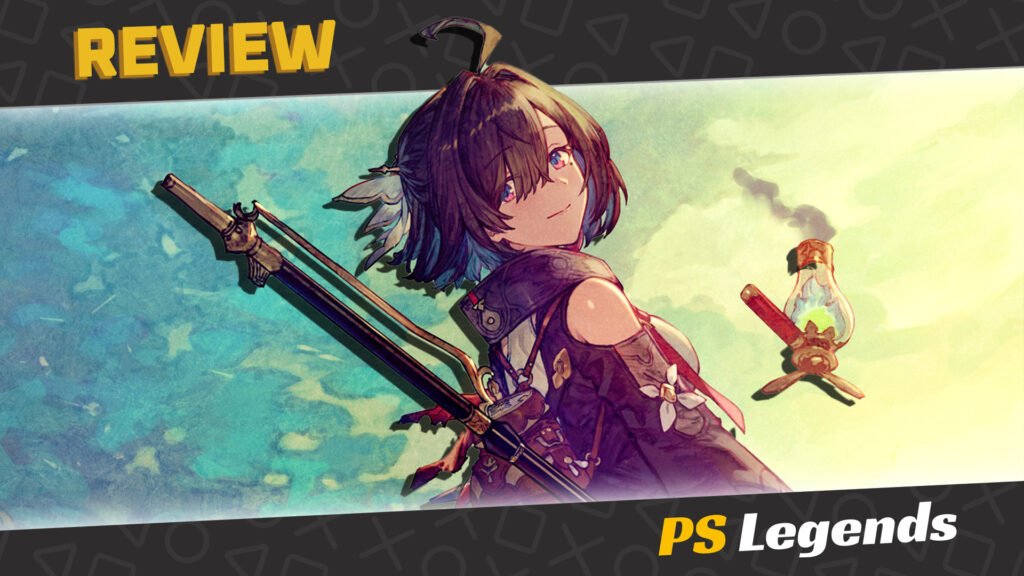It’s interesting to revisit the roots of your favorite franchises to see first-hand what’s changed and what’s stuck around all these years, though perhaps ‘visit’ would be more accurate than ‘revisit’ since apparently, Europe wasn’t worthy of the original six Final Fantasy games the first time around. By the time we started getting ports of these iconic games, we’d already been through the PSOne JRPG golden age. So we’d already seen the best of what Final Fantasy had to offer, while these predecessors looked outdated, unrefined, and (dare I say it) ugly. We aren’t bitter about the delayed releases, honest…
On This Page
Introduction
Final Fantasy is a high-fantasy role-playing video game developed and published by Squaresoft (now Square-Enix) in 1987. It is the first game in Square’s Final Fantasy series, created by Hironobu Sakaguchi. Originally released for the NES, Final Fantasy has been remade for several consoles and is often bundled with other Final Fantasy titles from the same era.
The Pixel Remaster series aims to provide the most optimised versions of the first six Final Fantasy games by fine-tuning the translation, remaking the soundtrack entirely with orchestral music and adding various quality of life improvements. My question is, are these improvements enough to make these remastered games the definitive versions?
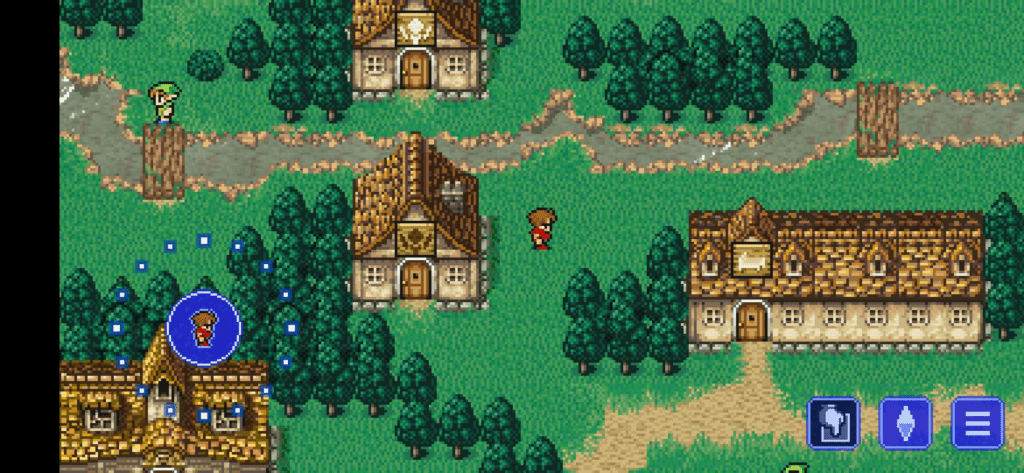
Story
Final Fantasy takes place in a small world of three continents. The elemental powers of this world are determined by the state of four crystals, each governing one of the four classical elements: earth, fire, water, and wind. The world is inhabited by numerous races, including humans, elves, dwarves, mermaids, dragons, and even robots. Four hundred years prior to the start of the game, the Lufenian people, who used the Power of Wind to craft airships and a giant Floating Castle, watched their country decline as the Wind crystal went dark.
Two hundred years later, violent storms sank a massive shrine that served as the center of an ocean-based civilization, and the Water crystal also went dark. The Earth crystal and the Fire crystal followed, plaguing the earth with raging wildfires, and devastating the land as the plains and vegetation decayed. Some time later, the sage Lukahn tells of a prophecy that four Warriors of Light will come to save the world in a time of darkness.
You’ll be playing as the four mythical Warriors of Light, summoned by the King of Cornelia to find the four elemental crystals scattered around the world and restore their light by defeating the monsters which corrupt them and thus avoid the upcoming apocalypse. After the Warriors prove their worth by rescuing the Princess, Sarah, from the corrupted knight Garland, the four begin their true quest.
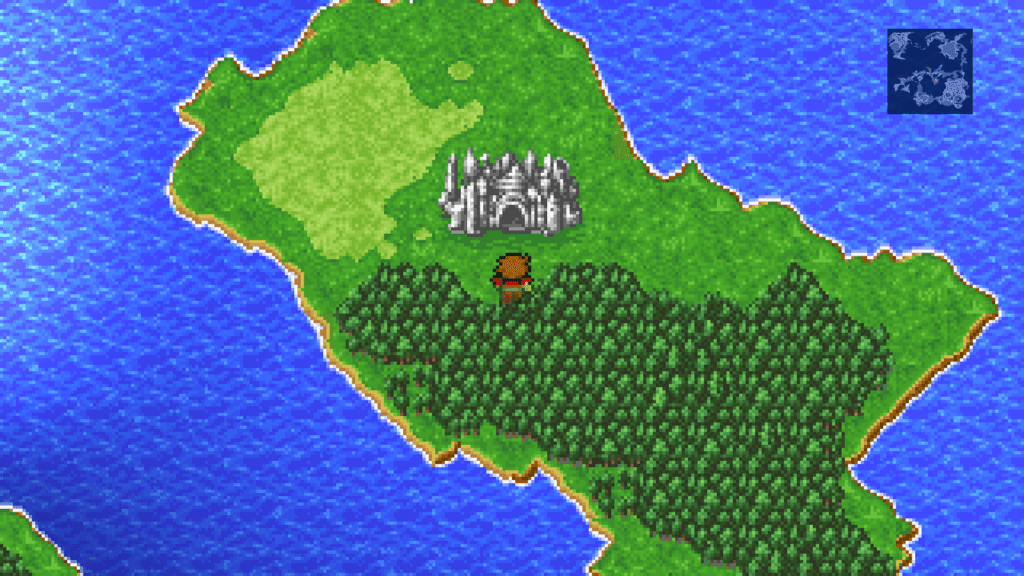
Gameplay
Final Fantasy has four basic game modes: an overworld map, town and dungeon maps, a battle screen, and a menu screen. The overworld map is a scaled-down version of the game’s fictional world, which the player uses to direct characters to various locations. The primary means of travel across the overworld is by foot; a ship, a canoe, and an airship become available as the player progresses. With the exception of some battles in preset locations or with bosses, enemies are randomly encountered on field maps and on the overworld map when traveling by foot, canoe, or ship, and must either be fought or fled from.
The game’s plot develops as the player progresses through towns and dungeons. Some town citizens offer helpful information, while others own shops that sell items or equipment. Dungeons appear in areas that include forests, caves, mountains, swamps, underwater caverns, and buildings. Dungeons often have treasure chests containing rare items that are not available in most stores. The game’s menu screen allows the player to keep track of their experience points and levels, to choose which equipment their characters wield, and to use items and magic.
A character’s most basic attribute is their level, which can range from one to fifty, and is determined by the character’s amount of experience. Gaining a level increases the character’s attributes, such as their maximum hit points (HP), which represents a character’s remaining health. A character becomes incapacitated when they reach zero HP.
Combat in Final Fantasy is menu-based; the player selects an action from a list of options such as Attack, Magic, and Item. Battles are turn-based and continue until either side flees or is defeated. If the player’s party wins, each character will gain not only experience but also money, which is known as Gil in the Final Fantasy universe. If every character in the party dies, the game will be over and all unsaved progress will be lost. Final Fantasy was the first game to show the player’s characters on the right side of the screen and the enemies on the left side of the screen, as opposed to a first-person view.
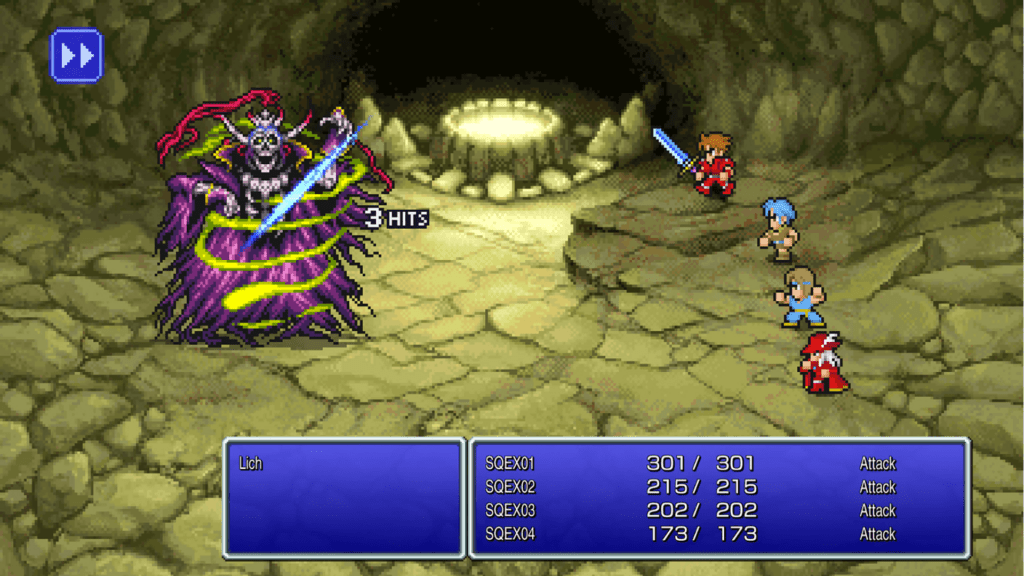
The player begins the game by choosing four characters to form a party and is locked into that choice for the duration of the game. Each character has an occupation, or character ‘class’, with different attributes and abilities that are either innate or can be acquired. There are six classes: Fighter, Thief, Black Belt, Red Mage, White Mage, and Black Mage. Later in the game, the player has the option to have each character undergo a class upgrade whereby their sprite portraits mature, and some classes gain the ability to use weapons and magic that they previously could not use.
The game contains a variety of weapons, armour, and items that can be bought or found to make the characters more powerful in combat. Each character has eight inventory slots, with four to hold weapons and four to hold armour. Each character class has restrictions on what weapons and armour they may use. Some weapons and armour are magical; if used during combat, they will cast spells. Other magical artifacts provide protection from certain spells or status effects.
At shops, the characters can buy items to help themselves recover while they are traveling. Items available include potions, which heal the characters or remove ailments like poison or petrification; Tents and Cabins, which can be used on the world map to heal the player and optionally save the game; and Houses, which also recover the party’s magic after saving. Special items may be gained by doing quests.
Magic is a common ability in the game, and several character classes use it. Spells are divided into two groups: White, which is defensive and healing, and Black, which is debilitating and destructive. Magic can be bought from White and Black magic shops and assigned to characters whose occupation allows them to use it. Spells are classified by a level between one and eight, with four White and four Black spells per level. Each character may learn only three spells per level. White and Black Mages can potentially learn any of their respective spells, while Red Mages, the Ninja, and the Knight cannot use most high-level magic.
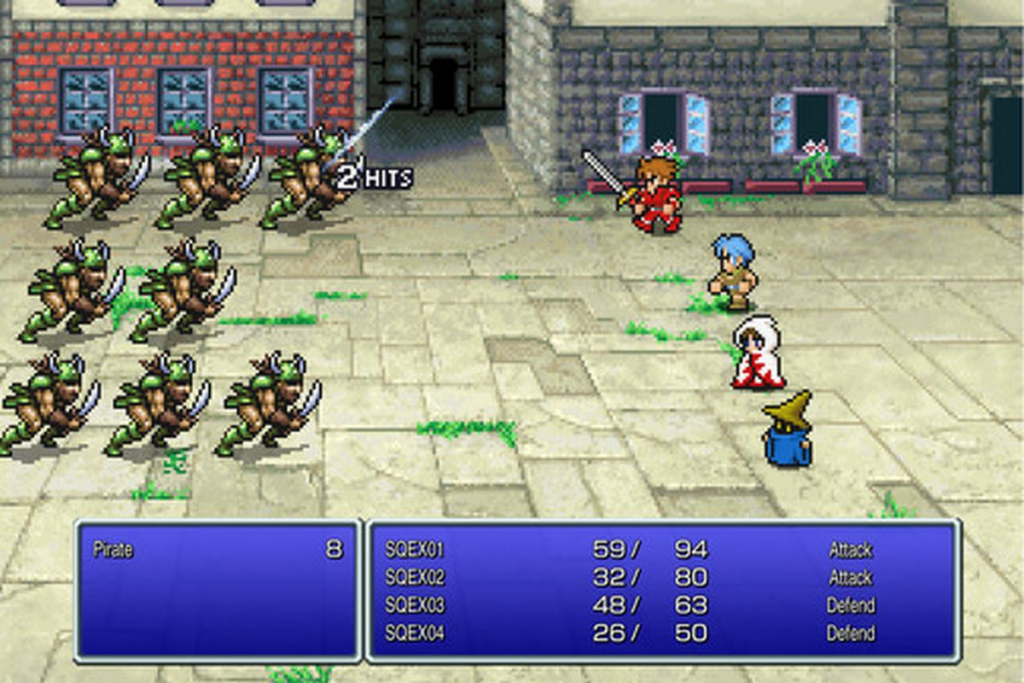
Graphics/Sound
Is the visual upgrade deserving of praise? Probably not, since the graphics used are only fractionally better than their original versions and not enough to bridge the hefty generation gaps. It’s odd that a series subtitled ‘Pixel Remaster’ has so little effort put into optimising its visuals for a HD-standard market.
Graphical improvements consist of a wide-screen conversion, slightly brighter colours and less muddied textures. It’s a shame that the rebuilt character models didn’t get a complete overhaul during the process to make them look something closer to human, like their smoother, more anime-inspired variants used in the smartphone editions. No matter which character class you choose for your party of four nameless heroes, none of them look like the default Warrior of Light artwork.
So, it’s not a pretty game, but how does it sound? Surprisingly well, truth be told. The simple, quick-fire, combat is made all the more enjoyable by the revitalised battle theme which now has a catchy orchestral rock twist which had me tapping my toes on many an occasion.
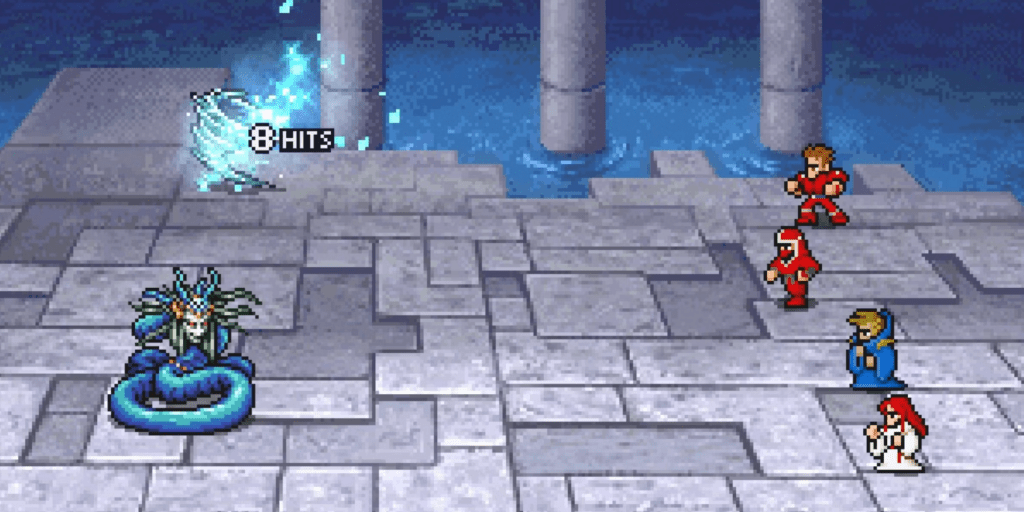
Replayability/Trophies
In a rare move for a Final Fantasy game, nothing is missable and every trophy can be snagged in a single playthrough. Simply complete the game in as little as ten hours and open all chests at your leisure. There’s also a secret mini-game to play, a bestiary to complete and a bit of level-grinding to do, then that’s it. Done.
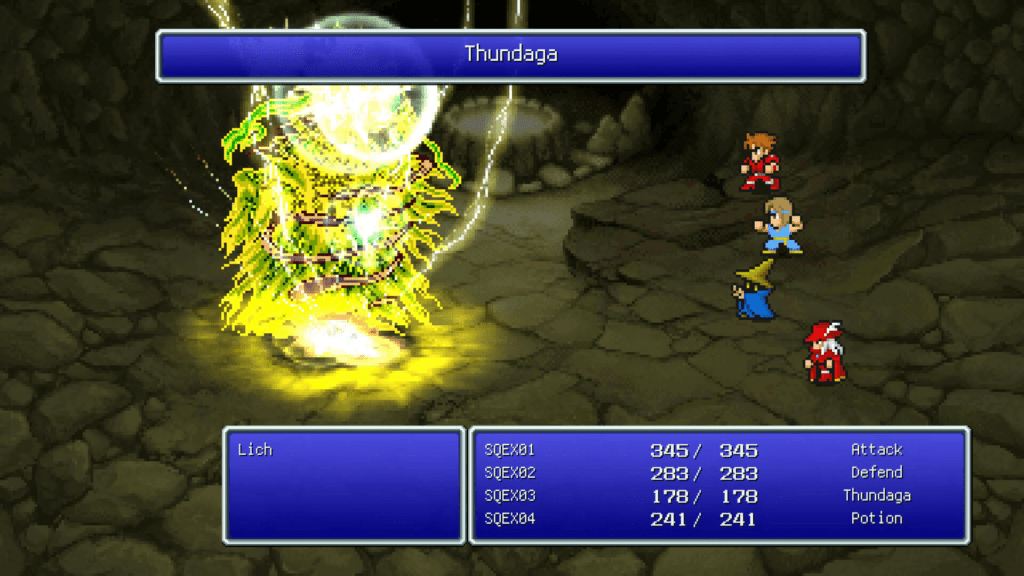
Conclusion
There are hints of a decent story here, with a rich world of multiple cultures opening up as you play, along with mysterious villains, hidden agendas and curious time-loops. It’s a world and story which is thankfully expanded on in side-story Stranger of Paradise, which I’d happily recommend exploring.
The downside in the storytelling here is that your party of four custom heroes have no personal development. This means your quartet are expected to show up, shut up and save the world, no questions asked. It’s difficult to immerse yourself in a world where your party has no personal stake in the surrounding drama.
To my surprise, I found that defeating the boss monsters and their associated lackeys was not the biggest challenge you’ll be facing, as simply finding the dungeons which hide each crystal will require some moderate detective work. There are no quest markers and so you’ll actually have to talk to people to learn the whereabouts of the next objective.
There are some charming elements which will appeal to the nostalgic gamer; elements which have since been forgotten in modern JRPGs, such as slipping the local priest a few gold to revive your fallen comrades (an option later borrowed by Sega’s Shining Force series) until you can learn the relevant spell yourself, or swapping vehicles when required to suit your environment.
As such, we’ve got a mixed bag of components here. Visually unappealing yet the sound is surprisingly polished. The story could benefit from expansion whilst the characters have no personality or backstory at all to speak of. The gameplay is fun, fast and progressive and makes for a quick and rewarding platinum playthrough with no missable content. It’s a game that doesn’t really try to cater for every variant of its audience, and so we’ve got another divisive one on our hands.
Joys
- Fun, quick-fire, turn-based combat
- Brilliantly orchestrated soundtrack
- Nothing is missable
Cons
- Not much of a story
- Characters have no depth or development at all
- Visually pretty dire
